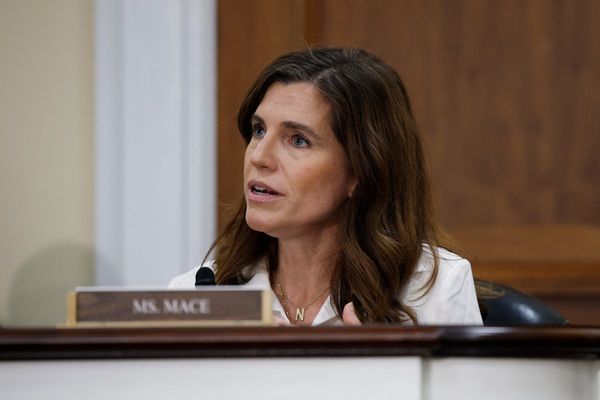While the supreme court’s decision to overturn Roe v Wade sent shockwaves around the country, many activists, physicians and advocacy groups closely engaged in the fight over abortion in the US were not surprised.
Since Roe’s establishment of the federal right to abortion in 1973, anti-abortion advocates and conservative lawmakers have been chipping away at it. Restrictions on abortion increased over the last decade, and by the mid-2010s, seven states had just one abortion clinic left. In Mississippi, where the Dobbs v Jackson Women’s Health Organization case that ultimately ended Roe originated, the state’s one clinic did not provide abortions beyond 16 weeks of pregnancy, meaning many people already had to travel to find care.
For residents in a state with the highest poverty rate in the nation, where there is no guaranteed childcare, and where elected officials have refused to expand Medicaid to cover low-income workers, that often meant obtaining an abortion was unlikely. For those who do move forward with pregnancies, the state doesn’t make that easy either. The states like Mississippi that have now passed the strictest abortion laws are also typically the ones with the lowest minimum wages, the least generous policies that support families, least access to education and to health care. In many southern states, the rates of maternal and infant mortality and morbidity are among the highest in the country. The US has the highest maternal death rate of any wealthy country, and Black women suffer most – they’re three to four times as likely to die from pregnancy-related complications as white women.

The ways the US healthcare system has treated Black people continues to affect their health in profound ways, says Dr Nina Ragunanthan, an OB-GYN who serves the largely low-income Black community in Mississippi’s Delta region.
“You take a group of people that have been so abused for generations,” she says, “the essential stress from that passes down.” Ragunanthan and other doctors say these inherited health challenges combined with ongoing racism mean that abortion bans and their subsequent effects, from medical providers moving away from states with restrictive laws to the potential of criminal penalties, have a disproportionate impact on Black Americans.
In the days after the Dobbs decision, protesters flooded the Pink House, as the Jackson Women’s Health Organization clinic was known. The Pink House Defenders, the group of volunteers who escorted patients to and from the clinic, were used to seeing regular, sometimes heated demonstrations outside, and so tried to keep things as normal as possible for patients, said Derenda Hancock, the group’s founder. “We are just trying to be here for the patients until the last moment.”

Many abortion clinics stopped providing care the moment the Dobbs decision came down as they scrambled to interpret what the ruling meant for their state. The Pink House closed its doors for good on 6 July, and as the summer stretched on, more abortion bans took effect. Sixty-six clinics across 15 states stopped offering abortions in the first 100 days after Roe fell, according to the Guttmacher Institute, a research form that supports abortion rights.
Clinics in states where abortion remains legal saw huge increases in patients seeking care, and they tried to expand hours and staffing to meet those needs.
I went home with his birth certificate and an empty box with a black flower on it. – Ebony Jones
Doctors, patients and activists spoke out, drawing attention to the ripple effects that new abortion laws were having not only on those who sought abortions, but also on people experiencing pregnancy complications, miscarriages and on those who used medications that were caught up in the uncertainty around the new legislation. Anti-abortion doctors and advocates, meanwhile, argued that the laws were clear and doctors were at fault for any confusion about when the laws applied.
In August, the new era of abortion restrictions faced its first test at the ballot box when Kansas voters decisively rejected a measure that would have opened the state to future abortion bans. The surprising win for abortion rights supporters served as a symbol of a brewing backlash to the supreme court’s decision, and added fuel to debates within the Republican party about how far it should go with its new ability to restrict abortion.

Senator Lindsay Graham proposed a national 15-week abortion ban in September, but other conservative states faltered as they tried to agree on limits for abortion without the constraints of Roe.
The intensity of these fights increased as the country headed toward the midterm elections, where abortion was suddenly at the forefront of nearly every campaign. Members of Congress held hearings on the topic. Advocates flooded into states where more ballot measures addressed abortion, and where voters were now acutely aware of the power that state and local elected officials have over their lives.
Meanwhile, reproductive justice advocates, who had been warning for years that Roe was not enough to guarantee abortion access, ramped up their plans to help people find care. Some clinics that stopped offering abortions remained open in states with bans to provide other reproductive health services, gender-affirming care and follow-up appointments for people who terminated their pregnancies out of state.

Grassroots groups known as abortion funds raised money to help people afford abortions and the travel, lodging, childcare and extra costs that come with seeking medical assistance far from home. People like Michelle Colon, founder of Shero in Mississippi, organized volunteers to drive more than 50 women at least 10 hours north to Illinois to obtain abortions. Colon herself drove at least 20 times between the end of June and the fall, sometimes bringing more than one patient in her car and paying for travel costs herself. She is now among the very few individuals left providing such help in Mississippi.
With the country focused on abortion in a way it hadn’t been for years, advocates tried to cut through the stigma around the topic. They held conferences, speakouts and encouraged politicians to talk about the issue on the campaign trail leading up to the November midterm elections.

On 8 November 2022, voters delivered a ringing endorsement of abortion rights in key states, establishing new abortion protections in Michigan, California and Vermont, while rejecting efforts to restrict abortion or criminalize providers in Kentucky and Montana. Elsewhere, voters supported governors and other state level candidates who backed abortion rights in places like Wisconsin, Michigan, Pennsylvania, Kansas and Arizona.
As the post-Roe reality set in, abortion pills, which have been on the World Health Organization’s list of “essential medicines” for years and now account for more than half of US abortions, proved a key flash point.
Abortion rights activists see the pills, a two-drug regimen also known as medication abortion, as a key way to help people get care privately and take some of the load off brick-and-mortar clinics. Telehealth services like Hey Jane, Choix and Abortion on Demand expanded in states where abortion remains legal. The number of abortions provided by virtual-only telehealth providers increased from an average of 4,025 abortions a month (or 5% of all abortions) before Dobbs to 7,461 a month (9% of all abortions) in the first nine months after the decision, according to the Society of Family Planning’s new WeCount report. For people who couldn’t or didn’t want to use official channels, activists expanded underground networks run by groups like Las Libres and Red Necesito Arbortar that are delivering abortion pills to Americans from as far away as Mexico and India.

Those who oppose abortion see pills as enabling a way around their favored laws. While the vast majority of Americans did not want to see Roe overturned and public opinion has only solidified in favor of abortion rights since last summer, the anti-abortion movement does not care if its positions are not widely popular. This year, Christian legal advocacy group Alliance Defending Freedom filed a lawsuit aiming to force the FDA to take mifepristone, one of the two drugs used for medication abortions, off the market nationwide.
After a Trump-appointed federal judge in Texas agreed with the group, the supreme court eventually blocked the restrictions and maintained access for now. But the case is likely to end up back at the supreme court, where it could still upend abortion access in every state.
She asked me to show her a photo of my oldest son. And then she asked ‘what if I kill him? – Amanda Furdge
The 2023 legislative session brought a number of new state abortion bans and restrictions, though some of these have now been blocked by courts. Democratic-leaning states pushed back by allocating funding and passing new protections for abortion seekers and providers within their borders. In other places, conservative lawmakers sought to limit ballot measures related to abortion. A group of patients in Texas who say they were denied medically necessary abortions despite risks to their lives and their fetuses, sued the state seeking to clarify exceptions to its abortion bans and as physicians in other states highlighted similar situations also arguing for more health-based exceptions, lawmakers often proved skeptical and anti-abortion advocates encouraged them to hold strong.

Throughout the spring, abortion funds continued to help people access care. But while many groups in places as diverse as Louisiana, Arizona and Colorado doubled and tripled their fundraising from before Dobbs, they are now warning that funding is lagging as the public’s attention wanes. The New York Abortion Access Fund, which has helped patients from 29 states, Washington DC and six countries access abortions in the last year, says it is on pace to run out of money by October if it does not receive more support.

In Mississippi, health problems continue and people like Colon, one of the few people helping residents in her state find the resources to travel and obtain abortions, says the situation feels almost like Jenga, the children’s game that involves precariously removing wooden blocks from a tower until they collapse. “They’re just pulling away everything,” she says. “There’s only a couple more blocks left. You’ve got these other blocks just kind of teetering.”
We never thought that we would be the ones who would be able to provide abortion access to women in the US. – Veronica Cruz
It’s not clear what will happen when the last block is gone. More lawsuits and legal attacks are coming, OB-GYNs are leaving states with abortion bans, and training for the next generation of medical residents in states with restrictions remains uncertain.
But for now, abortion rights advocates are not giving up.
Colon says she feels like she is fighting back against the new laws every time she gets someone to an appointment to terminate their pregnancy if that’s what they want. “You may have put up all of these hurdles, but we’re still getting folks there,” she says. “We’re basically crawling over fucking glass, we’re climbing mountains, yet we’re still getting people there.








